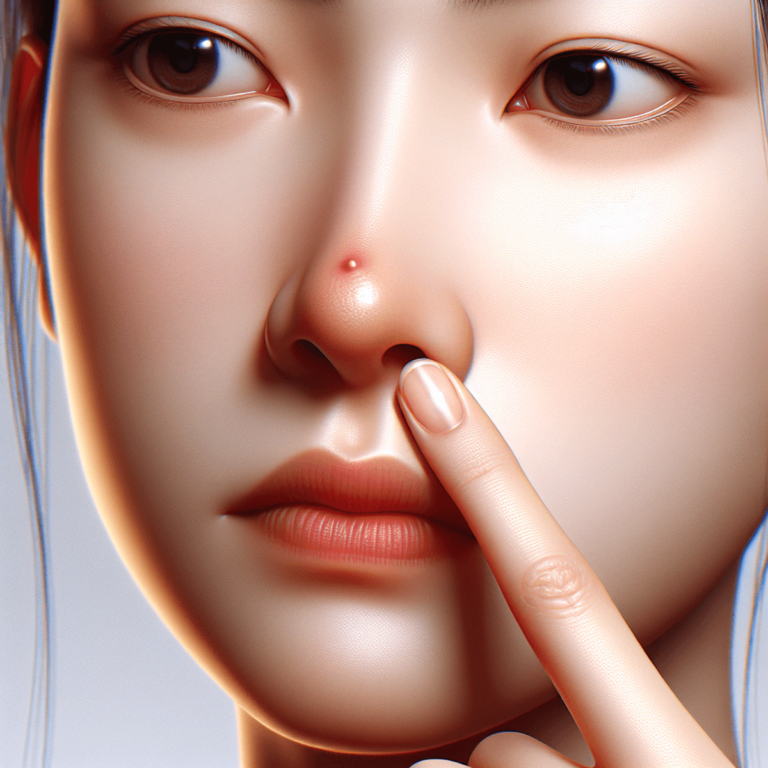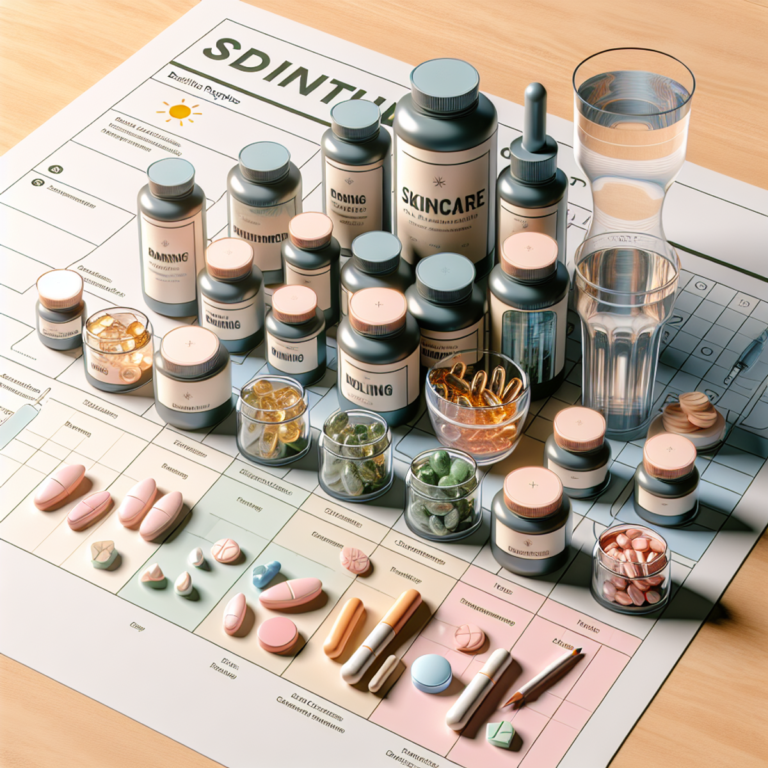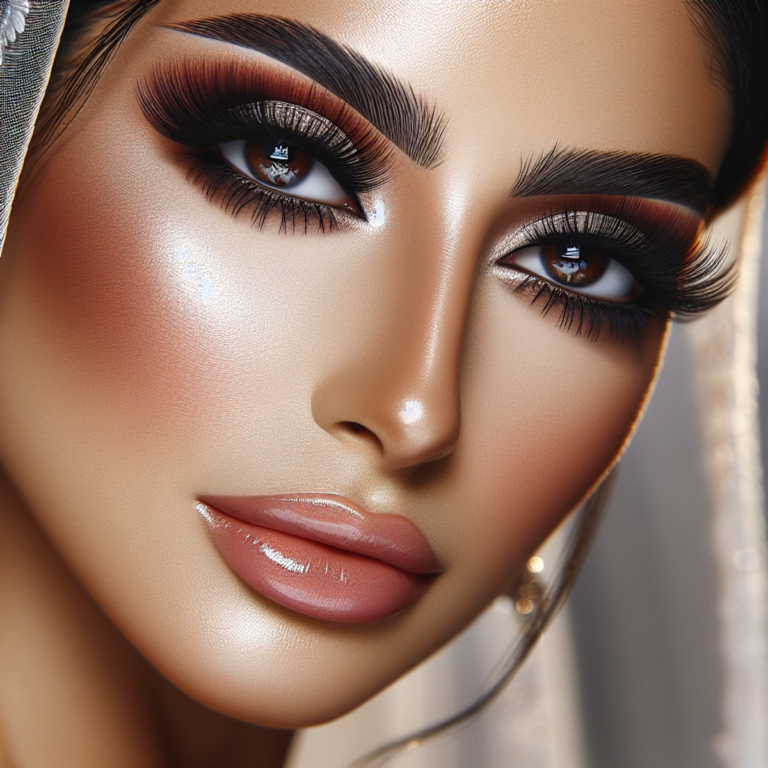How to get rid of big pimples

Introduction
Dealing with big pimples can be an incredibly frustrating experience. Often referred to as cystic acne or nodules, these painful blemishes take longer to heal and are more challenging to manage compared to smaller pimples. Understanding how to effectively treat and prevent these large pimples is essential for maintaining clear skin.
This article focuses on practical strategies for treating and preventing big pimples. Whether you’re seeking methods on how to remove pimples naturally and permanently or looking for quick solutions on how to get rid of pimples overnight, you’ll find valuable insights here.
Key Takeaways:
- Effective treatments: Discover various at-home treatments, including warm compresses, topical treatments, and hydrocolloid patches.
- Preventative measures: Learn about skincare routines and lifestyle changes that help prevent future breakouts.
- Professional help: Understand when it’s time to seek help from a dermatologist for persistent cystic acne.
While big pimples can be a significant concern, there are multiple ways to manage them effectively. From at-home remedies like benzoyl peroxide applications to professional treatments, we’ll explore all the options available to help you achieve clearer skin.
Understanding Big Pimples
What Are Big Pimples?
Big pimples, often referred to as cystic acne or nodules, are a severe form of acne that penetrates deep into the skin. Unlike regular pimples, which typically surface as small, raised bumps, cystic acne is larger and more painful. These pimples can manifest as red, swollen lumps filled with pus, making them significantly more challenging to treat.
Differences Between Big Pimples and Regular Acne
Understanding the differences between big pimples and regular acne is crucial for effective treatment:
- Size and Pain: Big pimples are larger and more painful compared to regular acne.
- Depth: While regular pimples stay on the surface or just beneath it, cystic acne forms deeper within the skin.
- Healing Time: Cystic acne takes longer to heal and has a higher risk of scarring.
- Inflammation: Big pimples are often more inflamed and can lead to significant discomfort.
Common Causes of Big Pimples
Several factors contribute to the development of big pimples:
- Clogged Pores: Accumulation of oil, dead skin cells, and dirt can block pores, leading to inflammation and infection.
- Hormonal Changes: Fluctuations in hormones, especially during puberty, menstruation, or pregnancy, can trigger cystic acne.
- Bacteria: The presence of bacteria such as Propionibacterium acnes (P. acnes) aggravates inflammation and infection in clogged pores.
Understanding these underlying causes helps address common concerns like how do I get rid of a big pimple, how do you get rid of big spots, or how to remove pimples. By identifying the triggers specific to your skin issues, you can tailor treatments effectively.
At-Home Treatments for Big Pimples
1. Warm Compress
Applying a warm compress can be an effective strategy for managing big pimples at home. Here’s how you can do it:
- Prepare the Compress: Soak a clean cloth in warm water. Ensure the water is warm enough to provide comfort but not so hot that it burns your skin.
- Apply to Affected Area: Gently press the warm, damp cloth against the large pimple for about 10-15 minutes.
- Repeat as Needed: You can repeat this process 3-4 times a day, ensuring that the compress remains warm each time you apply it.
Benefits of Using Heat for Drainage and Inflammation Reduction
Utilizing a warm compress on inflamed pimples offers multiple benefits:
- Promotes Drainage: The heat helps to open up pores, encouraging any trapped pus or sebum to naturally drain out without squeezing or popping.
- Reduces Inflammation: Warmth increases blood circulation to the affected area, which can help reduce swelling and redness.
- Pain Relief: The soothing effect of warmth can alleviate discomfort associated with large, painful pimples.
By incorporating warm compresses into your skincare routine, you may notice a significant improvement in both the appearance and discomfort of big pimples.
2. Topical Treatments
Topical treatments are a cornerstone of at-home care for big pimples. Products containing benzoyl peroxide and salicylic acid are particularly effective.
Benzoyl Peroxide
- Function: Benzoyl peroxide works by killing bacteria that cause acne, reducing inflammation, and helping to clear clogged pores.
- Usage: Apply a small amount to the affected area once or twice daily. Start with a lower concentration (2.5% or 5%) to minimize irritation.
- Tip: Moisturize after application to prevent dryness and peeling.
Salicylic Acid
- Function: Salicylic acid exfoliates the skin, unclogs pores, and reduces swelling and redness.
- Usage: Use a cleanser with salicylic acid or apply a topical gel directly on the pimple. Begin with one application per day and gradually increase if needed.
- Tip: Avoid excessive use as it can lead to dryness and irritation.
These ingredients are accessible in various forms like creams, gels, and cleansers, making them versatile options for your skincare routine.
For best results:
- Cleanse your face thoroughly before applying any topical treatment.
- Use a gentle cleanser that doesn’t strip your skin of its natural oils.
- Follow up with a non-comedogenic moisturizer to keep your skin hydrated.
Effective management of big pimples often starts with consistent use of these over-the-counter treatments.
3. Using Ice to Reduce Swelling
Applying ice can be an effective way to reduce the swelling of large pimples. The cold temperature constricts blood vessels, which helps to minimize redness and inflammation. This simple treatment can provide immediate relief and support the healing process.
Benefits of Using Ice on an Inflamed Pimple:
- Reduces Swelling: The cold temperature helps to constrict blood vessels, reducing the size and swelling of the pimple.
- Minimizes Redness: Ice can help decrease redness by slowing down blood flow to the affected area.
- Provides Pain Relief: The numbing effect of ice can reduce the pain and discomfort caused by large, inflamed pimples.
How to Properly Apply Ice for Maximum Effect:
- Wrap Ice in a Cloth: Never apply ice directly to your skin. Instead, wrap a few ice cubes in a clean cloth or use an ice pack.
- Apply to Affected Area: Hold the wrapped ice against the pimple for about 1-2 minutes at a time.
- Take Short Breaks: Remove the ice for a few minutes before reapplying it. This prevents skin damage from prolonged exposure to cold.
- Repeat as Needed: You can repeat this process several times a day, especially if the pimple is particularly swollen or painful.
By incorporating ice treatment into your at-home skincare routine, you can effectively manage the symptoms of big pimples while promoting faster healing.
4. Hydrocolloid Patches and Their Role in Healing Pustules
Hydrocolloid patches have become a popular at-home treatment for managing big pimples, particularly pustules. These small, adhesive patches are designed to create a moist environment that promotes faster healing while protecting the pimple from external irritants.
Description of Hydrocolloid Patches in Acne Care:
- Composition: Hydrocolloid patches are typically made from a gel-forming agent that absorbs excess fluids from the pimple, as explained in this Healthline article.
- Design: They are usually transparent or skin-colored, making them discreet enough to wear during the day.
- Application: Simply clean the affected area, apply the patch directly on the pimple, and leave it on for several hours or overnight.
Effectiveness of Hydrocolloid Patches for Pustules:
- Absorption of Fluids: These patches effectively draw out pus and other fluids from pustules, reducing their size and severity.
- Protection: By covering the pimple, hydrocolloid patches prevent you from picking or squeezing it, which can lead to scarring and further irritation.
- Reduction of Inflammation: The moist environment created by the patch helps soothe inflamed skin, promoting quicker recovery.
For those wondering how to get rid of big pimples or how to get rid of a huge pimple, incorporating hydrocolloid patches into your skincare routine can be a game-changer. When used correctly, they offer a practical solution for reducing the appearance and discomfort associated with large pimples, providing visible results without causing additional skin damage. To understand more about how these patches work, you can refer to this Cleveland Clinic article.
5. Avoiding Irritants While Caring for Big Pimples
Big pimple treatment at home can be highly effective when done correctly. One critical aspect is avoiding skin irritants that can make the problem worse.
Importance of Not Popping or Picking at the Pimple
Popping or picking at a huge pimple can lead to further inflammation, scarring, and potential infection. It might be tempting to squeeze the pimple, but this can push bacteria deeper into the skin, making the situation worse. Instead, focus on gentle treatments like a warm compress to encourage drainage and reduce inflammation.
Identifying Harsh Products to Avoid
Certain skincare products can aggravate an already inflamed pimple. Here are some to steer clear of during active breakouts:
- Alcohol-based toners: These can dry out the skin and cause irritation.
- Exfoliants with rough particles: Physical exfoliants with large granules can damage the skin barrier.
- Heavy moisturizers or oils: These may clog pores further and worsen acne.
- Fragranced products: Perfumes and artificial scents can irritate sensitive skin.
Using gentle, non-comedogenic products helps in managing large pimples without adding further stress to your skin. Maintaining a simple routine focused on healing rather than aggravation is key for effective treatment.
When Home Remedies Are Not Enough: Seeking Professional Help with Cystic Acne Management
Signs Indicating the Need for Professional Help
Persistent cystic acne often requires more than at-home treatments. Here are some signs that you may need to consult a dermatologist:
- Severe Pain: If your pimples are causing significant discomfort or pain, especially if it’s a condition like Hidradenitis Suppurativa, it’s time to seek professional advice.
- No Improvement: When home remedies and over-the-counter treatments show no signs of improvement after several weeks.
- Frequent Flare-Ups: Recurrent cystic acne that doesn’t respond well to conventional treatments.
- Scarring and Skin Damage: If you’re noticing scars or long-term skin damage due to persistent acne.
Potential Treatments from a Dermatologist
Dermatologists offer a range of treatments tailored to your specific needs. Some common options include:
Cortisone Injections
These are quick and effective for reducing inflammation and size of cysts. A small amount of cortisone is injected directly into the pimple, providing almost immediate relief.
Cortisone injections can significantly reduce the size of large pimples within 24-48 hours.
Prescription Medications
Depending on the severity of your acne, dermatologists might prescribe:
- Oral Antibiotics: To reduce bacteria and fight inflammation.
- Oral Contraceptives: For women, birth control pills can help regulate hormonal imbalances contributing to acne.
- Isotretinoin (Accutane): A potent medication for severe cases, known for its effectiveness but also its potential side effects. Always discuss potential side effects and follow your dermatologist’s guidelines when using prescription medications like Isotretinoin.
By consulting a dermatologist, you benefit from professional expertise and access to advanced treatments that can make a substantial difference in managing cystic acne effectively.
Preventing Future Breakouts: Skincare Routine and Lifestyle Considerations Combined
Importance of Maintaining a Consistent Skincare Routine
To effectively manage and prevent big pimples, it’s crucial to adopt a consistent skincare routine. A regular regimen helps maintain skin health by keeping pores clean, balancing oil production, and providing essential hydration.
Key elements of an effective skincare routine:
- Cleansing: Use a gentle cleanser twice daily to remove dirt, oil, and makeup.
- Exfoliating: Incorporate exfoliation 2-3 times a week to clear dead skin cells and prevent clogged pores. Opt for exfoliants with salicylic acid or glycolic acid.
- Moisturizing: Hydrate your skin with non-comedogenic moisturizers that won’t clog pores.
- Sun Protection: Apply broad-spectrum sunscreen daily to protect against UV damage, which can exacerbate acne.
Products to Include in Your Routine
Including the right products in your routine can target current breakouts while preventing future ones.
Effective products for managing big pimples:
- Salicylic Acid: This beta-hydroxy acid penetrates deep into the pores to dissolve excess oil and dead skin cells.
- Benzoyl Peroxide: It kills acne-causing bacteria and reduces inflammation. Start with lower concentrations to minimize irritation.
- Retinoids: These vitamin A derivatives promote cell turnover and prevent pore blockage. Prescription-strength retinoids are more effective but consult a dermatologist before use.
- Non-Comedogenic Moisturizers: Products labeled as non-comedogenic are designed not to block pores. Look for ingredients like hyaluronic acid for hydration without greasiness.
Diet Considerations in Preventative Cystic Acne Care
Diet plays an influential role in skin health. Certain foods may trigger or worsen cystic acne flare-ups based on personal experience.
Potential dietary triggers:
- Dairy Products: Milk, cheese, and other dairy products have been linked to increased acne risk due to hormones present in them.
- High Glycemic Foods: Foods like white bread, sugary snacks, and soft drinks spike blood sugar levels, potentially leading to increased oil production and inflammation.
- Processed Foods: Highly processed foods often contain unhealthy fats and additives that may worsen acne.
Suggestions for a Balanced Diet
Supporting overall skin health through diet involves consuming nutrient-rich foods that promote clear skin.
Skin-friendly dietary tips:
- Omega-3 Fatty Acids: Found in fish like salmon and flaxseeds, omega-3s help reduce inflammation.
- Antioxidant-Rich Foods: Fruits like berries and vegetables such as spinach are packed with antioxidants that combat oxidative stress on the skin.
- Hydration: Drinking plenty of water is essential for maintaining skin hydration and removing toxins from the body.
Adopting these dietary practices along with a consistent skincare routine can create a comprehensive strategy against future breakouts.
Natural Remedies for Persistent Cystic Acne: A Holistic Approach
Exploring natural remedies can offer alternative approaches to manage persistent cystic acne. While these methods may not provide overnight miracles, they can complement traditional treatments and support overall skin health.
Herbal Treatments
Tea Tree Oil
- Benefits: Known for its anti-inflammatory and antimicrobial properties, tea tree oil can help reduce redness and swelling associated with big pimples.
- Application Tips: Dilute the oil with a carrier oil (e.g., coconut or jojoba oil) before applying it to the skin. Use a cotton swab to apply directly to the pimple.
- Caution: Always perform a patch test first to ensure no allergic reaction occurs.
Green Tea Extract
- Benefits: Green tea is rich in antioxidants that help fight inflammation and bacteria on the skin.
- Usage: Apply green tea extract topically or use skincare products containing green tea extract. Drinking green tea may also support overall skin health.
- Scientific Evidence: While some studies show promising results, green tea may be more effective when combined with other treatments.
Limitations of Natural Remedies
Despite the potential benefits, natural remedies have limitations:
- Scientific Evidence: Many herbal treatments lack extensive scientific research to fully support their efficacy in treating cystic acne alone.
- Complementary Role: These remedies often work best as part of a comprehensive skincare routine that includes dermatologist-recommended treatments like topical retinoids.
Importance of Professional Consultation
Before trying any new product on your skin, especially those claiming rapid results:
- Thorough Assessment: Consult with a dermatologist for a tailored approach based on individual skin needs.
- Avoiding Misinformation: Be cautious about trends and personal experiences shared online; what works for one person might not work for another due to differences in skin types and conditions.
Tailored Approach
Adopting a holistic perspective involves:
- Considering genetics and environment
- Lifestyle habits
- Professional guidance
This comprehensive approach ensures healthier, clearer skin free from unwanted blemishes, regardless of their size.
FAQs (Frequently Asked Questions)
What are big pimples and how do they differ from regular acne?
Big pimples, often referred to as cystic acne or nodules, are larger, more inflamed lesions that can develop due to clogged pores, hormonal changes, or bacterial infections. Unlike regular acne, which may present as smaller bumps or whiteheads, big pimples are typically deeper and more painful.
What at-home treatments can I use to get rid of big pimples?
Effective at-home treatments for big pimples include warm compresses to reduce inflammation, topical treatments like benzoyl peroxide and salicylic acid for their antibacterial properties, ice application to minimize swelling, and hydrocolloid patches that help in healing pustules.
How does a warm compress help with big pimples?
Applying a warm compress to a large pimple helps increase blood circulation and promote drainage. Heat can also reduce inflammation and pain associated with the pimple, making it easier for the body to heal the affected area.
When should I seek professional help for cystic acne?
You should consider consulting a dermatologist if you experience persistent cystic acne that doesn’t improve with home remedies. Signs that indicate a need for professional help include severe pain, frequent breakouts, or if the acne is affecting your self-esteem. Dermatologists may offer treatments such as cortisone injections or prescription medications.
What skincare routine can help prevent future breakouts?
Maintaining a consistent skincare routine is crucial for preventing future breakouts. This includes using non-comedogenic moisturizers and products that target both existing blemishes and prevent new ones. Additionally, being mindful of dietary triggers known to worsen cystic acne can support overall skin health.
Are there natural remedies that can help with persistent cystic acne?
Natural remedies such as tea tree oil or green tea extract may help reduce inflammation associated with persistent cystic lesions. However, it’s important to approach these remedies cautiously and consult professionals before trying new products, as results can vary based on individual skin types and conditions.










